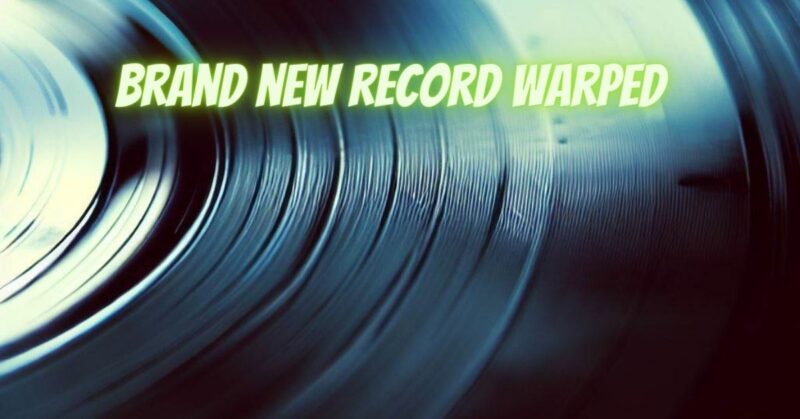Opening a brand new vinyl record and discovering it’s warped can be a disappointing and frustrating experience for any vinyl enthusiast. While vinyl records are generally sturdy, warping can occur due to various factors, including manufacturing issues, improper handling, or unfavorable storage conditions. In this article, we will explore the common causes of warped brand new records and provide guidance on what steps you can take to address the issue.
Common Causes of Warped Brand New Records:
- Manufacturing Issues:
- Despite quality control measures, some records may be subjected to manufacturing defects that result in warping. This can include inconsistencies in the cooling or pressing process, leading to uneven distribution of vinyl material.
- Storage Conditions during Shipping or Storage:
- Extreme temperature fluctuations or exposure to heat during shipping or storage can cause vinyl records to warp. Records stored in direct sunlight, near heat sources, or in non-temperature-controlled environments are particularly vulnerable.
- Improper Handling:
- Mishandling records, such as stacking them horizontally or placing heavy objects on top of them, can lead to warping. It’s important to store records upright and handle them with care to prevent unnecessary pressure or stress on the vinyl.
Addressing a Warped Brand New Record:
- Evaluation:
- Examine the degree of warping and determine whether it affects playability. Minor warps may not significantly impact sound quality, while more severe warps may cause skipping or distortion during playback.
- Weighted Solution:
- For minor warps, you can try placing the warped record between two heavy, flat objects (e.g., books) and leave it for a period of time, allowing the weight to help flatten the vinyl. Be cautious not to add excessive weight that could cause damage.
- Heat Method:
- Use caution with this method, as it carries some risk. Place the warped record between two sheets of glass and expose it to direct sunlight or a low-heat source, such as a hairdryer on low setting. Monitor the process closely to avoid overheating or causing further damage. Gradual heating might help the vinyl regain its original shape, but this method is not foolproof and may not work in all cases.
- Professional Assistance:
- If the warp persists or is severe, consider reaching out to a professional record restoration service. These experts have specialized equipment and techniques to address warping issues and may be able to salvage the record.
Prevention Tips for Future Purchases:
- Research Record Labels:
- Before purchasing records, do some research on the reputation and quality control practices of the record labels. Look for labels known for their commitment to quality vinyl pressings.
- Storage Considerations:
- Implement proper storage practices for your vinyl collection, including keeping records stored upright in a cool, dry, and stable environment. Avoid exposing records to extreme temperatures or sunlight.
- Seller Return Policy:
- If you receive a brand new record that is noticeably warped, check the return policy with the seller or contact them to request a replacement or refund.
Discovering a warped brand new record can be disappointing, but there are steps you can take to address the issue. Evaluate the severity of the warp and try weighted solutions or controlled heat methods to flatten the vinyl. If these methods prove ineffective or the warp is severe, professional assistance may be necessary. To prevent future warping, research record labels, practice proper storage techniques, and be mindful of the seller’s return policy. By taking these precautions, you can enhance your vinyl listening experience and minimize the likelihood of encountering warped brand new records.

